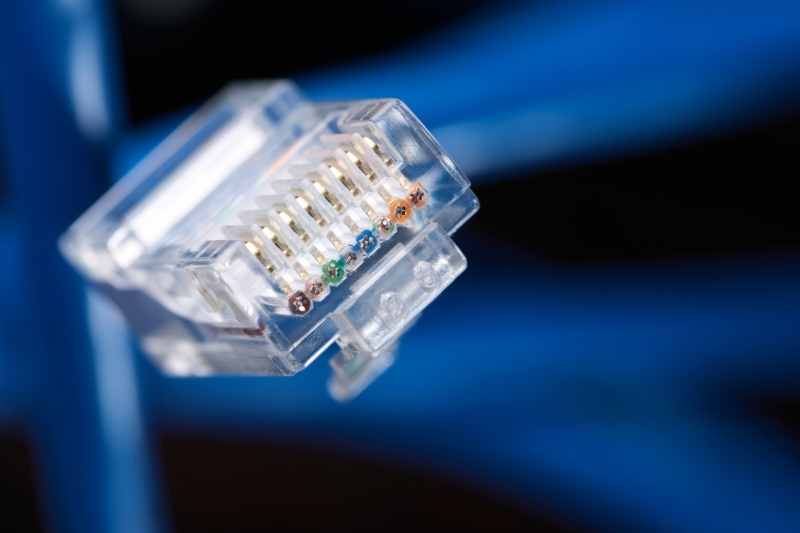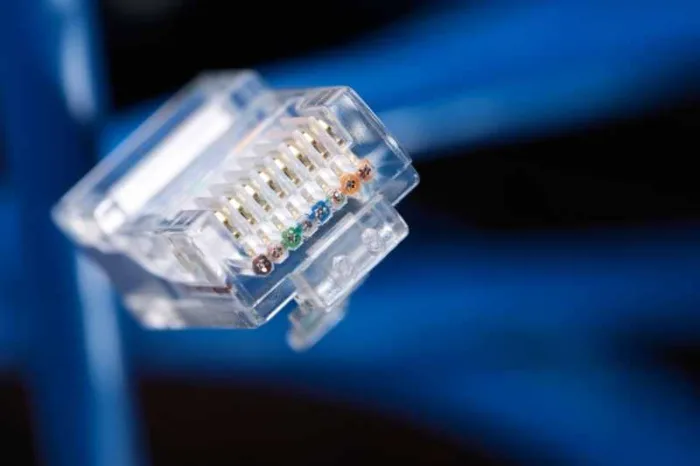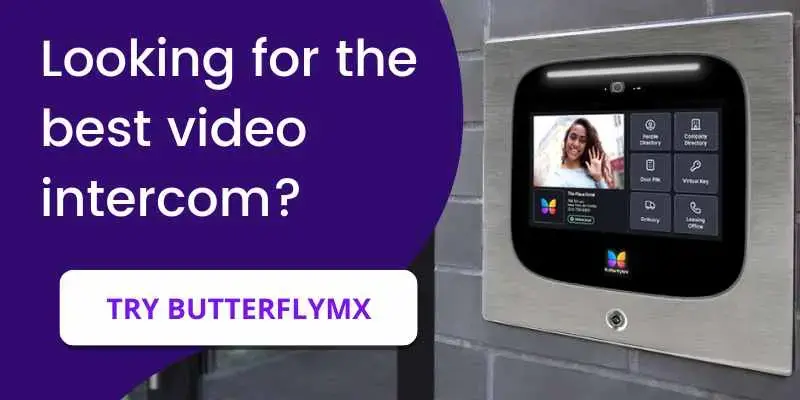Key takeaways
- PoE intercoms enhance property access by empowering tenants to grant access to visitors without leaving their units.
- When looking for a PoE intercom, look for powerful features that increase convenience. These include a mobile app, voice-command capabilities, a video camera, and a web-based dashboard.
- Installing a PoE intercom requires one less cable than installing an IP intercom because the PoE ethernet cable serves as a power cord. However, IP intercom installation follows the same steps, making it equally easy to install.

Picking the perfect intercom for your property is no easy task! And with so many choices available, you must weigh your options carefully to choose the best. After all, a good intercom can make the difference between smooth property access and an insecure, vulnerable building. One popular choice is the PoE intercom. But what exactly are they, and are they the best choice for your unique property needs?
Continue reading to discover PoE intercoms and how they work, including their installation. We also outline several features you should seek from your intercom. Finally, we cover the differences between PoE and traditional IP intercom systems, including installation differences.
This post covers:
- What is a PoE intercom?
- How does a PoE intercom work?
- Features to look for in a PoE intercom
- PoE intercoms vs. traditional IP intercoms
What is a PoE intercom?
A PoE intercom system is an IP intercom that runs on Power over Ethernet. Like all intercom systems, an IP PoE intercom allows visitors to request access at your building’s front door or gate. However, its installation requirements set it apart from other intercom systems.
A PoE device connects to the Internet and is powered by one cable, so there is no need for a traditional power cord.
Among the most popular PoE intercoms is the Algo 8201 SIP PoE Intercom, a hard-wired access control system that can be flush mounted to your entryway.
How does a PoE intercom work?
A PoE intercom uses ethernet to transmit data between its components.
Components of a PoE intercom
- Base stations: The base station, also known as a master station, communicates with all intercom components. It is installed at the entryway or front gate of your property. Base stations may include cameras, microphones, or both for extra security.
- Substations: Substations, also called terminals, are what your residents use to communicate with visitors at the base station. In the past, substations were large, clunky hardware installed in each unit, requiring extensive wiring throughout the building. But nowadays, you can install wireless terminals to save time and money on installations. Additionally, a resident’s smartphone can be used as a substation!
- Camera and microphone: An intercom system with a camera and microphone component is among the best on the market. The camera takes a photo of every entry event, creating an audit trail for safety. It also allows your residents to video chat with guests, increasing security.
- Door strike: The door strike is the door release mechanism that unlocks the door when a resident grants access. These can be electric or magnetic. Without a door strike, your residents must physically walk to the entryway to let guests in.
Here’s how visitors contact residents using PoE intercoms
- Visitor selects a tenant. They can do this by scrolling through the intercom directory or searching the tenant’s name. With some PoE intercom systems, visitors can enter a tenant’s number to contact them via the intercom.
- Base station sends a signal to the substation. The two stations establish a connection using ethernet.
- Resident and visitor communicate. PoE intercoms enable data transfer through several methods. One is VoIP telephone entry, which stands for Voice over Internet Protocol. This transmits audio data between the base station and the substation. However, the safest and most reliable method is video chatting. This allows a tenant to verify a visitor’s identity before granting access.
- The resident grants entry. Once the resident verifies the identity of their visitor, they press a button on their substation. This signal is then sent to the door strike, which releases and allows the visitor to enter.
Features to look for in a PoE intercom
Compared to traditional intercoms—i.e., telephone entry or door intercom systems—PoE intercoms can offer a wide range of features.
Secure and convenient features to look for in a PoE intercom include:
- A powerful mobile app that allows residents to grant entry from anywhere in the world on their smartphones. This significantly lowers the chance of missing a visitor or a delivery.
- Voice-command capabilities that empower residents to connect their intercom to home assistants such as Alexa or Siri. This creates a high-tech resident experience and eliminates the issue of fumbling around with keys!
- An IP intercom with camera that enables video calling. Live video calling allows your residents to visually confirm the identity of visitors before granting them access.
- Integration with a web-based dashboard that property managers can use to adjust resident access permissions and organize the resident directory. This also allows you to view an audit trail of all door release events.
How to connect ButterflyMX to Alexa:
PoE intercoms vs. traditional IP intercoms
The primary difference between PoE intercoms and IP intercom systems is installation. Traditional IP, or Internet Protocol, intercoms require separate cords to connect to power and the internet. Meanwhile, PoE intercoms connect to both using just one cord.
So, PoE intercoms offer slightly easier installation. However, IP intercoms, such as the ButterflyMX video intercom, are still easy to install.
How to install a PoE intercom:
First, install the base station. To do this, you must size and cut a hole in the wall and drill a hole for your ethernet cable.
Also, if you’re installing a door strike, remember to connect that wire!
Once your ethernet cable and door strike is wired up, secure the door station to the entryway with screws and mortar. Because substations are generally wireless, you won’t have to do any physical setup to connect them to the base station.
Overall, installing a PoE intercom is incredibly easy. Because you don’t have to worry about running wiring throughout your whole building, you save upwards of thousands on overhead costs.
While the installation for PoE intercoms is simple, IP intercoms such as ButterflyMX which require both an ethernet cable and a power cable, are equally as easy. What’s more, the ButterflyMX IP intercom comes with the ButterflyMX OS. This mobile app substation means the only appliances you need for a robust property access system are an intercom and electronic door locks!






